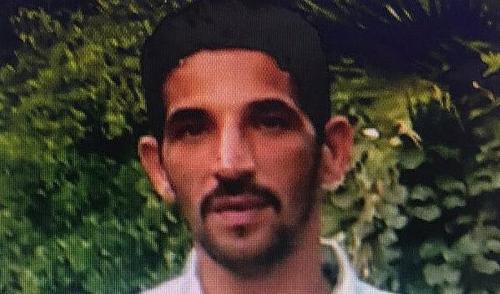24 April 2021 :
Sonia Sotomayor’s Lonely Battle to Give the Voiceless a Voice at the Supreme Court
In 2 new opinions, the justice continues to provide a small grace to victims of unconstitutional abuses ignored by her colleagues.
Every year, the Supreme Court receives about 10,000 petitions and hears only around 80 cases. 4 justices have to vote to hear an appeal, which ensures that thousands of petitions are swatted away without comment, leaving the lower court’s decision as the final word. Unfairness is baked into the cake: SCOTUS’s desire for tidy docket management means that egregious wrongs go unrighted simply because 4 justices lack the nerve, the bandwidth, or the desire to address them. A majority of the court seems content with this state of affairs. Not Justice Sonia Sotomayor. In recent years, Sotomayor has emerged not only as the conscience of the court but as the watchdog of its docket. She continually writes separate opinions to flag cases involving extreme cruelty, lawlessness, and other inequities. Her goal appears to be to urge the public to pay attention to the injustices that the Supreme Court lets stand.
On Monday, the Supreme Court turned away 2 cases, Brown v. Polk County and Whatley v. Warden, with appalling facts, prompting Sotomayor to write separately about each of them. Start with Brown. In 2017, Sharon Brown was arrested for suspected shoplifting in Polk County, Wisconsin. While in the county jail, 2 inmates accused her of hiding a packet of methamphetamines in a body cavity. Jail officials sent Brown to the hospital, where a doctor used a speculum to open and examine her vagina. When he found no drugs, he inserted the speculum into Brown’s anus and opened it. The doctor’s headlamp then went out, so Brown waited with the speculum in her anus while he searched for a flashlight. After several minutes, he found the flashlight and discovered no drugs.
Brown sued the jail officials for violating her Fourth Amendment right against unreasonable searches. She argued that the Constitution requires correctional officers to obtain a warrant based on probable cause before searching the body cavities of a pretrial detainee. (It should be noted that pretrial detainees like Brown have not been convicted of a crime and are legally innocent.) The lower courts ruled against her, finding that officers need only a reasonable suspicion for such a search, and had it in this case. Brown appealed, urging the Supreme Court to rule that a warrant, rather than mere reasonable suspicion, is necessary to conduct such an invasive search of pretrial detainees.
SCOTUS turned away the case without comment. Justice Amy Coney Barrett recused herself because, while serving on the 7th U.S. Circuit Court of Appeals, she participated in the decision not to take up the case as a full court after a 3-judge panel ruled against Brown. Sotomayor concurred with the court’s decision not to hear Brown’s appeal, writing that SCOTUS should wait to act until other courts consider the issue. (Under an informal rule, the Supreme Court lets legal questions “percolate” in the lower courts before rendering a verdict.)
Following this gesture of collegiality, however, Sotomayor recounted the revolting facts with an eye toward the systemic racism and sexism that lie just behind them. She quoted extensively from Brown’s testimony, noting that, when the doctor removed the speculum from her anus, she said: “I immediately started crying. I couldn’t stop. I cried myself to sleep. I cried all the way back to the jail. I cried the whole time I was getting dressed.”
“This trauma left Brown with anxiety and depression,” Sotomayor wrote. “She slept just 3 hours a night. She experienced flashbacks and feared leaving the house, terrified the police would pull her over and send her back to jail. Nearly 2 years later, Brown was still afraid of being alone in a room with a man. Even her own brother.”
Sotomayor pointed out that the Polk County jail has a policy of believing inmates who accuse a fellow detainee of concealing drugs and automatically perform cavity searches on these individuals. “An unverified charge from a stranger with unknown motives could send anyone to the hospital for a penetrative search, just like Brown,” she wrote. Meanwhile, “almost anyone can be arrested for something” thanks to the dramatic expansion of criminal laws. “An unbuckled seatbelt, a noisy muffler, an unleashed dog: Any one of countless petty misdemeanors might land you in jail.
“People of color disproportionately bear these burdens,” Sotomayor continued. “Brown is a member of the Fond du Lac Band of Lake Superior Chippewa. Native American people are vastly overrepresented in Wisconsin jails and prisons.” And, citing an amicus brief filed in the case, Sotomayor pointed out that Native American women “experience sexual violence at higher rates than any other population in the United States,” meaning “non-consensual body cavity searches are more likely to traumatize and retraumatize” these women “and their communities.” (The justice has long paid attention to the disparate impact of overpolicing and overcriminalization racial minorities.)
Will Sotomayor’s opinion have any effect? On the public, certainly: It has already drawn attention (and scorn) to an obscure county jail’s odious policies, as well as their “degrading” and “dehumanizing” effects on detainees. But she also issued a warning to lower courts: Jails must consider “less offensive” and “invasive” methods before resorting to a body cavity search. “The courts below considered no such alternatives before holding that reasonable suspicion alone justified this degrading search into Brown’s vagina and anus,” she cautioned. “Future courts presumably will not do the same.” Translation: Lower court judges, don’t do this again.
Sotomayor’s opinions give voice to those crushed by the wheels of the criminal justice system.
Sotomayor’s other opinion on Monday, Whatley v. Warden, was an outright dissent. The facts of the case are stunning. After a jury in Georgia found Frederick R. Whatley guilty of murder, his trial moved to the penalty phase—when the jury would decide whether to recommend the death sentence. The Supreme Court has ruled that due process forbids the needless, visible shackling of defendants during this phase of a trial because it prejudices the jury. Yet Whatley’s attorney allowed him to hobble up to the stand, his shackles clearly visible to the jury, to testify for several hours. The prosecutor then directed Whatley to reenact the alleged murder using a toy pistol while providing a running commentary. (“I want you to point the gun at me just like you did him that day.”) As Sotomayor described it, “Whatley’s chains clanked and rattled with every move, constantly reminding the jury that the court apparently believed he might do more than just pretend to kill someone in the courtroom if left unrestrained.” Yet his defense attorney allowed all this to take place without objection.
Unsurprisingly, the jury sentenced Whatley to death. He then claimed that he had ineffective assistance of counsel in violation of the Sixth Amendment because his lawyer failed to object to his visible shackling, even during the bizarre “reenactment.” Every lower court ruled against him, and the Supreme Court rejected his appeal without comment. Sotomayor dissented, writing that she would order a new sentencing hearing for Whatley. As she explained:
Chains paint a defendant as an immediate threat. Jurors faced with a defendant in shackles will find it more difficult to consider the defendant as a whole person and to weigh mitigating evidence impartially. If jurors think the court does not trust a capital defendant to avoid violence at his own sentencing proceeding, with his life on the line, they are unlikely to trust him to do so while serving a life sentence with no hope of parole. … Whatley’s chains, fresh in the jury’s mind from the previous afternoon’s spectacle, powerfully corroborated the prosecutor’s argument. It is hard to imagine a more prejudicial example of needless shackling.
Powerful words—yet Sotomayor could not even convince fellow liberal Justices Stephen Breyer and Elena Kagan to join her dissent. Maybe that’s beside the point. Opinions like this one give voice to those crushed by the wheels of the criminal justice system. It echoes her opinions—mostly lone dissents—in cases that involve police brutality, the death penalty, prosecutorial misconduct, highly questionable or downright corrupt judicial practices, prison conditions during COVID, and the rights of clemency applicants. At the end of Donald Trump’s execution spree, Sotomayor published a dissent that named every individual put to death by the administration, as if bearing witness.
In January, Sotomayor even plucked out an obscure petition by a mentally ill immigrant facing deportation to Haiti, where he faced persecution, including torture. She scolded her colleagues for allowing the government to deport the immigrant while he appealed his removal order, denying him “the small grace” to which “he is legally entitled.”
Perhaps a “small grace” is what Sotomayor seeks to provide in these opinions, as well. She knows she has not persuaded three other justices, let alone a majority of the court, to come to her side. She knows prosecutors, law enforcement officers, and lower courts may simply ignore her stern warnings. But she writes them anyway, because she believes it is important to put on the record the unconstitutional abuses that voiceless people face in the United States every day. With this extremely conservative court, that may be the most that she, or any of us, can hope for.











